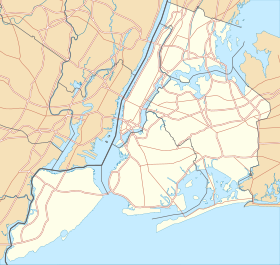Tompkins Square Park Police Riot (1988)
| Tompkins Square Park riot | |||
|---|---|---|---|
| Date | August 6–7, 1988 | ||
| Location |
New York City 40°43′43″N 73°58′53″W / 40.72861°N 73.98139°W |
||
| Goals | Opposition to gentrification, homelessness, park curfew | ||
| Methods | Riot, protest, demonstration | ||
| Parties to the civil conflict | |||
|
|||
| Number | |||
|
|||
| Arrests, etc | |||
|
|||
The Tompkins Square Park Riot occurred on August 6–7, 1988 in New York City's Tompkins Square Park. Groups of "drug pushers, homeless people and young people known as 'skinheads'" had largely taken over the park. The Alphabet City/East Village neighborhood, in which the park was located, was divided about what, if anything, should be done about it. The local governing body, Manhattan Community Board 3, recommended, and the New York City Parks Department adopted, a 1 a.m. curfew for the previously 24-hour park, in an attempt to bring it under control. On July 31, a protest rally against the curfew saw several clashes between protesters and police.
Another rally was held on August 6. The police charged a crowd of protesters, and a riot ensued. Bystanders, activists, police officers, neighborhood residents and journalists were caught up in the violence. Despite a brief lull in the fighting, the mêlée continued until 6 a.m. the next day. Mayor Ed Koch temporarily rescinded the curfew. The neighborhood, previously divided over how to deal with the park, was unanimous in its condemnation of the heavy-handed actions of the police.
Over 100 complaints of police brutality were lodged following the riot. Much blame was laid on poor police handling, and the commander of the precinct in charge was deprived of office for a year. In an editorial entitled "Yes, a Police Riot", The New York Times commended Commissioner Benjamin Ward and the New York City Police Department for their candor in a report that confirmed what ubiquitous media images made clear: the NYPD were responsible for inciting a riot.
After the Tompkins Square Riot of 1874, the park held a symbolic place in the New York labor movement. In the years leading up to 1988, the East Village — and Tompkins Square Park in particular — had become a gathering place and home for the wayward and contingents of the homeless and rowdy youth, growing into a large tent city.
...
Wikipedia

